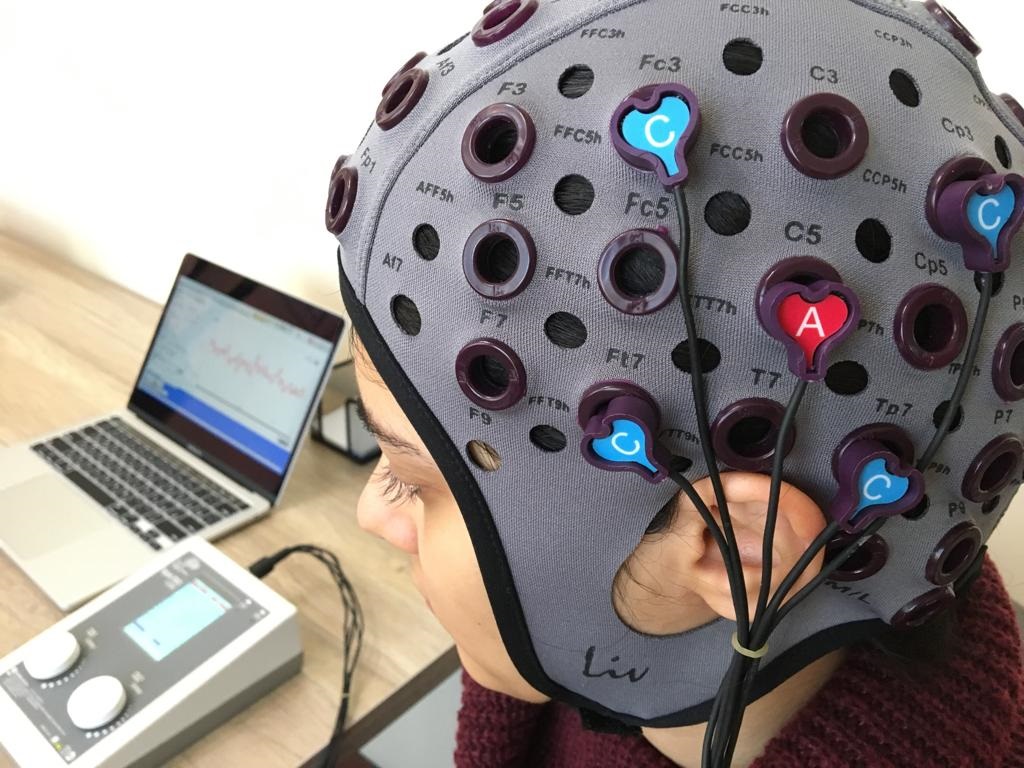DETAILS
HD-tDCS (High-Definition Transcranial Direct Current Stimulation)

High-definition Transcranial Direct Current Stimulation (HD-tDCS) is a cutting-edge technique of neuromodulation that utilizes low current delivered through electrodes placed on the scalp to target specific cortical and deep brain structures. By precisely manipulating the electrical activity of the brain, HD-tDCS has the potential to produce immediate and lasting changes in brain function, opening up new avenues for both research and clinical applications.
What sets HD-tDCS apart from traditional brain stimulation methods is its ability to provide a more localized and focused stimulation. With the placement of electrodes along the scalp, HD-tDCS allows researchers and clinicians to specifically modulate activity within the region of interest, resulting in enhanced precision and effectiveness. This focalized stimulation is particularly valuable when investigating specific brain networks or when seeking to treat conditions associated with localized brain dysfunction.
Liv HD-tDCS is a testament to the perfect combination of simplicity and functionality. It has been designed with meticulous attention to detail, ensuring user-friendliness, portability, and versatility. Its synchronized and optically isolated 2 channels enable simultaneous stimulation and data acquisition, allowing researchers and clinicians to gather valuable insights while delivering targeted brain stimulation.
Liv HD-tDCS is trusted and recommended by professionals and leading universities for its outstanding performance and comprehensive features. The device is an ideal neurodiagnostic solution for a wide range of applications, from basic neuroscience research to clinical trials and therapeutic interventions. Its capabilities make it an invaluable tool for investigating brain function, mapping neural circuits, and developing novel treatments for neurological and psychiatric disorders.
As the exclusive manufacturer of HD-tDCS technology in Iran, Liv Intelligent Technology has established itself as a key player in advancing the field of neuromodulation. With a commitment to innovation and excellence, Liv is driving the adoption of HD-tDCS in research labs, clinics, and academic institutions across the country. By providing researchers and clinicians with a state-of-the-art device like Liv HD-tDCS, Liv Intelligent Technology is empowering them to unlock new insights into the complexities of the human brain and improve the lives of those affected by neurological conditions.
Features:
- hiddenUser friendly
- hiddenLight weight
- hiddenPatient comfort
- hiddenFlexibility for the doctor
- hiddenIdeal for clinical and research usage
- hiddenTDCS cap, size: S/M/L
- hiddenMeasurement of real injected current
- hiddenSupport both tDCS and HD-tDCS
- iddenFriendly and intuitive handling of the recording and review software
- hiddenOperation on full charge up to 24 hours
- hiddenHigh precision micro ampere current
- hiddenReal time impedance check
- hiddenSession timer
- hiddenAuto safty shut-off
- hiddenEEG sub-bands stimulation(Delta, Theta, Alpha, Beta, Gamma)
High-Definition Transcranial Direct Current Stimulation (HD-tDCS) is a variant of transcranial direct current stimulation (tDCS) that utilizes multiple smaller electrodes to deliver electrical stimulation to specific brain regions with higher spatial precision. HD-tDCS aims to improve the targeting and focality of electrical stimulation, potentially enhancing its therapeutic effects. HD-tDCS has applications in various fields, including cognitive enhancement, neurorehabilitation, and psychiatric disorders. While HD-tDCS offers advantages over conventional tDCS, it also has certain limitations and considerations.
Applications of HD-tDCS:
Cognitive enhancement and learning: HD-tDCS is being explored for its potential to enhance cognitive functions such as attention, memory, and executive functions with greater precision compared to conventional tDCS. By targeting specific cortical areas involved in cognitive processes, HD-tDCS can offer improved outcomes in cognitive enhancement interventions.
Neurorehabilitation: HD-tDCS is utilized in neurorehabilitation settings to facilitate motor recovery and enhance motor learning in individuals with stroke, spinal cord injury, and other motor impairments. By precisely targeting motor-related cortical areas, HD-tDCS aims to modulate neural circuits and promote functional improvements.
Psychiatric disorders: HD-tDCS is being investigated as a potential treatment for psychiatric disorders, including depression, schizophrenia, and addiction. By selectively stimulating specific brain regions associated with these conditions, HD-tDCS can modulate neural activity and improve symptoms.
Research applications: HD-tDCS is used in research settings to investigate the causal relationship between brain regions and cognitive processes. By selectively stimulating different cortical areas, researchers can examine the functional connectivity and network dynamics within the brain.
Advantages of HD-tDCS:
Improved spatial precision: HD-tDCS offers better spatial targeting compared to conventional tDCS. By using multiple smaller electrodes, it can stimulate specific cortical areas with greater accuracy, reducing the spread of current to adjacent regions and increasing focality.
Enhanced customization: HD-tDCS allows for more precise customization of electrode montages to target specific brain regions. This flexibility enables researchers and clinicians to tailor stimulation protocols based on individualized needs and optimize treatment outcomes.
Potential for improved efficacy: Due to its enhanced targeting capabilities, HD-tDCS can potentially result in improved treatment efficacy compared to conventional tDCS. By delivering stimulation to specific cortical areas involved in the targeted function or disorder, HD-tDCS aims to enhance the desired therapeutic effects.

